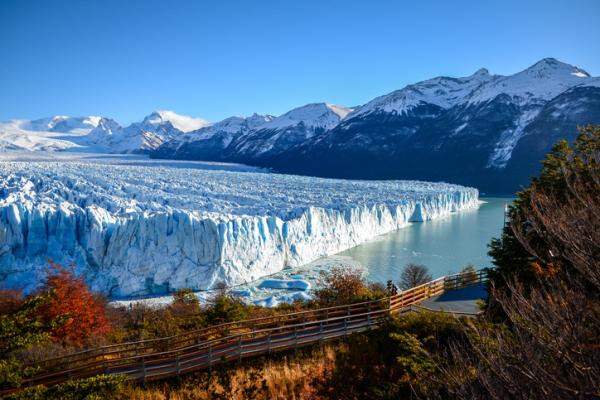
Argentina's natural resources, encompassing both renewable and non-renewable assets, are of immense importance. According to a 2019 study by FARN (Foundation for Environment and Natural Resources), approximately one-third of the goods and services produced domestically depend on natural resources. To properly utilize these resources and embark on sustainable land and economic management, it is essential to understand what Argentina's natural resources are, their current status, quality, and availability. This article, based on information provided by Ecology and drawing on the World Bank's natural resource criteria (including energy, minerals, agricultural land, forests, and protected areas), explores various examples of Argentina's natural resources.
Abundant Agricultural and Livestock Resources: A Key Driver of Argentina's Economy
Among Argentina's natural resources, the most distinctive is undoubtedly its abundant agricultural and livestock land. Extensive grasslands have long shaped Argentina's landscape and economic activities. Unlike many other countries where primary industries are in decline, the agricultural and livestock sector in Argentina continues to be a major driver of society.
Since the introduction of soybeans in the mid-1990s, their phenomenal growth has significantly transformed Argentina's agricultural structure, with soybeans now occupying more than half of all cultivated land. However, the use of genetically modified seeds and the herbicide glyphosate raises concerns about potential adverse effects on the environment and human health. In response to these issues, Argentina has adopted the creation of cultivated land edges as a conservation strategy to mitigate and prevent biodiversity loss and the degradation of soil resources. This contributes to reducing ecosystem destruction caused by monoculture, promoting biodiversity, and preventing soil erosion. Additionally, efforts are underway to improve soil health and reduce chemical use through the introduction of various sustainable agricultural techniques such such as crop rotation, conservation agriculture (minimum tillage, no-till), and organic farming.
Oil and Minerals: Over-exploitation of Non-Renewable Resources and Environmental Costs
Argentina's rich raw materials have fueled an increasing trend in hydrocarbon (oil and gas) and mineral (iron, coal, copper, sulfur, gold) development since the early last century. Indeed, the pace of extraction has become a major point of contention regarding controversial large-scale mining (megaminería), especially open-pit metallic extraction.
The over-exploitation of these non-renewable Argentine natural resources is leading to high social and environmental impacts. Despite a general public rejection of mining development, today megaminería is only subject to restrictions and/or prohibitions in 7 out of Argentina's 23 provinces. Major environmental problems caused by mining development include the generation of vast amounts of waste, water pollution (especially the leakage of harmful substances like cyanide and mercury), soil contamination, deforestation, and biodiversity loss. Socially, issues such as forced displacement of indigenous communities, health problems, and social conflicts arise. The Argentine government acknowledges these problems and is strengthening environmental regulations, but it struggles to find a balance between economic growth and resource development. International pressure and the activities of environmental organizations also influence Argentina's mineral development policies.
Forest Resources: Indiscriminate Logging and Protection Efforts
Abundant forest resources in northeastern Argentina, mainly consisting of subtropical and temperate forests, are extensively developed and face severe deforestation. Land-use changes for agriculture, vegetation burning, and logging for timber are major threats to forest resources. In particular, the creation of pastures for livestock expansion and the enlargement of large-scale agricultural land are cited as the primary causes of forest destruction.
As a strategy for preserving Argentina's native plant species, afforestation projects, mainly consisting of exotic commercial species (conifers, eucalyptus, willows, etc.), are actively promoted. This contributes to preserving the forest resources of the region while maintaining forest extraction economic activities. Furthermore, the planting of exotic species contributes to carbon sequestration, restoration of degraded soils, and purification of water resources, indirectly benefiting agricultural activities. However, it is also pointed out that research and monitoring are needed on the potential impact of planting exotic species on native ecosystems. Recently, the government has been strengthening efforts to conserve forests by intensifying crackdowns on illegal logging and introducing sustainable forest management certification systems.
Protected Areas: The Front Line of Biodiversity Conservation
Argentina boasts a significant network of protected areas to preserve its diverse climates and landscapes. Of Argentina's 49 protected areas, 46 are terrestrial and 3 are marine.
The first protected area, Southern National Park, was established in 1922, now known as Nahuel Huapi National Park. Located in Patagonia, this nature reserve is one of the most extensive regions. However, Los Glaciares National Park, located in Santa Cruz Province, is characterized by the presence of continental ice and glaciers forming the Southern Andean-Patagonian Forest, surpassing Nahuel Huapi National Park in terms of area and thus considered Argentina's largest protected area.
These national parks play various roles, including protecting endangered species, promoting eco-tourism, and addressing climate change. The Argentine government is strengthening biodiversity conservation efforts by expanding protected areas and encouraging community participation to promote sustainable management. Iguazú National Park and Perito Moreno Glacier, both UNESCO World Heritage Sites, represent Argentina's outstanding natural beauty and are recognized for their international conservation value.
Renewable Energy: Steps Towards a Sustainable Energy Future
To replace the development and reliance on non-renewable resources, Argentina has focused on renewable resources, particularly wind power projects, over the past few decades. The mountainous and coastal areas of Buenos Aires have high wind potential, with wind farms like Bahía Blanca and Tandil being prime examples.
Solar energy has also gained importance in recent years. Since 2010, the number of photovoltaic power plant installations has increased, supported by national policies. In Buenos Aires Province, the Provincial Program for the Promotion of Distributed Energy Generation (Proinged) stands out, encouraging renewable electricity production through small-scale energy sources close to consumption areas.
Despite their importance, wind and solar energy are still in their early stages of development. More prominent in the renewable energy sector than these sources is hydropower. Hydropower produces 30% of the country's total electricity, making it Argentina's primary power source. Argentina operates large-scale hydropower dams, leveraging its abundant water resources, such as the Paraná River and Uruguay River.
However, large-scale hydropower is also criticized for potentially causing environmental destruction and ecosystem changes, necessitating research and introduction of various hydropower methods such as small-scale hydropower or tidal power. Additionally, potential analysis and development efforts for other renewable energy sources like geothermal energy and biomass energy are needed.
Argentina's natural resources are the foundation of the national economy and a key driver for sustainable development. Abundant agricultural and livestock resources, mineral and energy resources, forest resources, and protected areas, which are reservoirs of biodiversity, are crucial factors that will determine Argentina's future. However, the over-exploitation of non-renewable resources, deforestation, and inadequate environmental regulations are causing serious environmental and social problems.
Facing these challenges, Argentina must pursue balanced development by introducing sustainable agricultural techniques, transitioning to environmentally friendly mining methods, strengthening forest conservation and restoration efforts, and expanding the development of renewable energy sources. Through these efforts, Argentina can wisely manage its natural resources and bequeath a healthy and prosperous environment to future generations.
[Copyright (c) Global Economic Times. All Rights Reserved.]




























